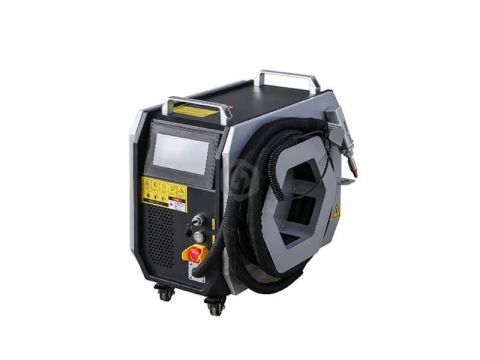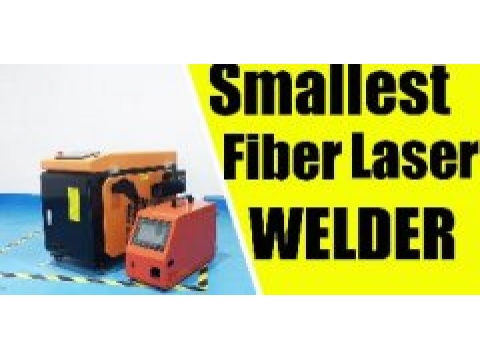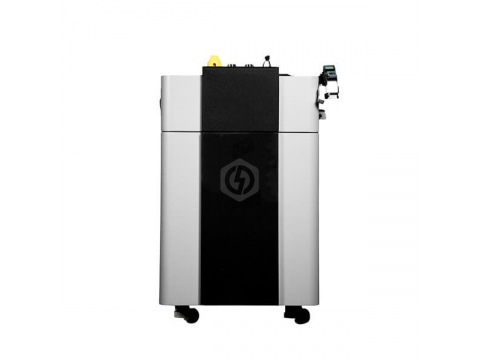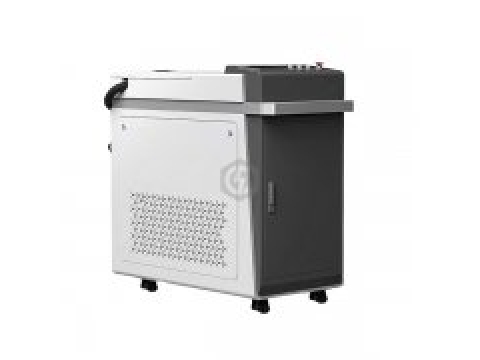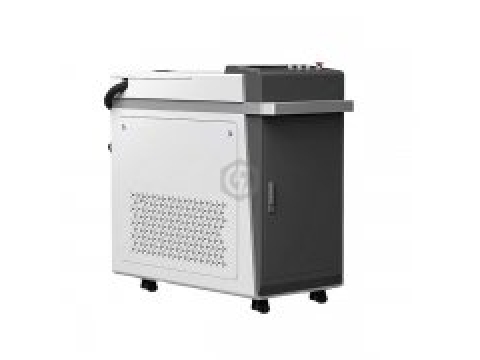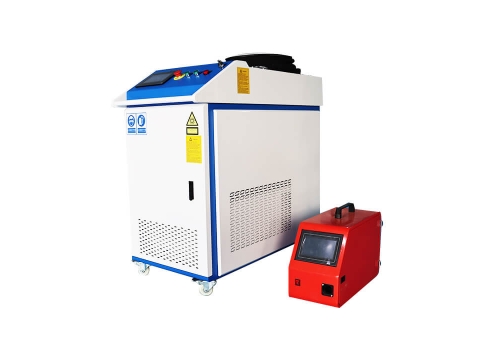Handheld Fiber Laser Welding Machine
Handled fiber laser welding machine
Handled fiber laser welding machine is a great choice for those who are looking for an easy to use and efficient welding machine. This type of welding machine uses a laser to weld metal, meaning that it can be used on a variety of different materials. very fast speed and small heat area make amazing laser welding process, the machine is also relatively portable, making it easy to take with you wherever you need to go.
Fiber laser welding machine with wobble laser head has many advantages. For example, it is very precise and can be used on a variety of different materials. In addition, the machine with portable laser welding head and friendly welding software.
If you are looking for an efficient and easy to use welding machine, then the handled fiber laser welding machine is the perfect choice for you.
Fiber Laser Welding Machine
Metal welders have been using the same technology since the early 1900s. This is due to the fact that there has not been a strong push for change in this industry. Most metal-welding processes are slow, expensive, and produce toxic fumes. But these days there are new technologies available thanks to fiber lasers! Fiber lasers can be used for welding metals together with precise accuracy and without any of that nasty smoke or gas from other methods of welding. These technological advancements make metal-welding much more precise than traditional methods of welding and can withstand higher temperatures than other types of welds. They also produce less waste material, which is good news to those who work with a lot of metal. Whether you are a professional welder or just someone who likes to work with metals, a fiber laser welding machine is the perfect tool for you!
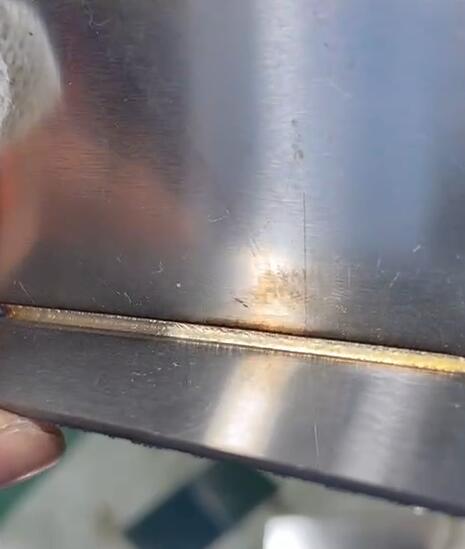
How Does It Work?
When light is passed through a rare-earth silica glass fiber, it causes the material to have a highly directional direction. When this light is focused onto the target area, it uses a small laser spot as an output while simultaneously having an input beam that induces thermal shock waves on the work piece and surrounding areas. This enables a much more efficient weld and cut process.
How are fiber lasers used for welding?
Fiber lasers are used for welding in much the same way as other types of lasers. A beam of intense light is focused onto the metal that needs to be welded. The heat from the laser melts the metal and joins it together. The main advantage of using a fiber laser for welding is that the heat can be very precisely controlled. This means that welds can be made quickly and accurately without damaging the surrounding metal.
How are fiber lasers better than traditional welding methods?
Fiber lasers have many advantages over traditional welding methods. Firstly, they are much faster than traditional methods of welding. This is because the heat from the laser can be concentrated in a small area very quickly. Secondly, fiber laser welds are much stronger than traditional welds. This is because the heat from the laser penetrates deeper into the metal, which makes the welds stronger and less likely to break. Finally, fiber laser welding produces very little waste material. This is because the heat from the laser only affects the area that it is focused on. Traditional methods of welding often result in a lot of wasted metal because the heat from the welding torch melts a larger area than is necessary.
What industries can benefit from using fiber lasers for welding metal together?
Fiber laser welding can be used in a wide variety of industries. Any industry that requires the joining of metals together can benefit from using this technology. This includes industries such as automotive, aerospace, construction, and manufacturing.
Benefits of Using Fiber Laser Welding Machine Technology
Environmental Benefits: The environmental benefits of using lasers for welding and cutting materials is a huge factor in the implementation of laser-guided cutting machines into manufacturing processes. The machines use nearly 90% less electricity than other types of lasers, which will significantly reduce the amount of carbon emissions being released in the atmosphere. In many instances, they can also eliminate gaseous emissions entirely by not using any coolant liquid to help guide the laser beam onto the target material. This eliminates known hazardous volatile organic compounds (VOCs) that are usually emitted by water vapor, such as carbon dioxide (CO) and nitrogen dioxide (NO). In addition, the welding machines have a significantly lower noise level than traditional cutting machines.
The use of Fiber Laser Cutting and Welding Machines can also reduce manufacturing costs and improve output quality. They are designed to cut materials with higher precision, as well as to increase productivity by enabling several users to work on a single piece at the same time. Using this technology, a large number of complex assemblies can be created in a short amount of time without the need for constant human interaction. This can help alleviate bottlenecks in production and eliminate the need for certain labor-intensive assembly operations.
What are some examples of products that are made with fiber laser welds?
Some examples of products that are made with fiber laser welds include car parts, aircraft components, buildings, and machinery.
How can I get my hands on a fiber laser welding machine?
If you are interested in purchasing a fiber laser welding machine, there are many companies that sell them. You can find a list of companies that sell fiber lasers here: https://www.azosensors.com/article.aspx?ArticleID=1076.
Are there any disadvantages to using fiber lasers for welding metal together?
There are some disadvantages to using fiber lasers for welding metal together. Firstly, they are more expensive than traditional welding methods. Secondly, they require more training to use properly. However, the advantages of using fiber lasers far outweigh the disadvantages! If you are looking for a quick, accurate, and safe way to weld metal, then a fiber laser welder is the perfect tool for you.
Limitations of Using a Fiber Laser Welding Machine
The majority of these machines are used for cutting or welding square and rectangular cross-sectioned areas, which limits their functionality. They are not capable of penetrating a variety of materials with different sizes, shapes, or angles. Many applications also require the power density to be higher than the laser's maximum output capabilities in order to achieve effective cutting. The older machines are not designed to cut stainless steel and other super alloys that have high melting points because they will become damaged by high temperatures when used on these types of materials.
The laser spot size is another limitation, since it affects the accuracy of the cut or weld. While some manufacturers have worked to create machines that can reach diameters of 10 mm and higher, these still might not be able to cut adequately sized circles and other irregular shapes. In addition, these machines will not work effectively on materials that have a high thermal conductivity because they have a tendency to heat up rapidly. These types of materials include copper, aluminum, and titanium alloys.
Another disadvantage is that if the laser beam becomes interrupted during operation, the edges of the weld or cut may become rough and uneven as opposed to having a straight edge like many traditional cutting machines can achieve. This can happen due to the high rate of thermal expansion that a fiber laser needs to produce, which may cause the beam to heat up as it passes through the material.
Environmental impacts
The environmental impact of laser cutting and welding machines is significantly less than that of other cutting and welding processes. They use almost 90% less electricity than traditional machines, which will allow for less consumption of fossil fuels in manufacturing facilities. High power lasers emit lower amounts of carbon dioxide and nitrous oxides, so they are typically not a major factor in air quality problems caused by factories.
Manufacturing facilities that use laser cutting and welding machines will likely see a decrease in their carbon footprint over time. To make these types of environmental improvements, it is critical that manufacturers incorporate eco-friendly technologies as soon as possible. Laser cutting and welding equipment is highly popular, which means that there are many companies that now offer reliable products for purchase, especially in the United States. Considering the high level of precision and accuracy of these cutting machines, it may be worth considering purchasing one for your factory.
These types of machines also have much less impact on the resources used in manufacturing facilities than other types of equipment do. Minimizing energy consumption will positively impact both the local environment and natural resources. The cost of using a laser machine to cut and weld materials is also significantly lower than the cost of using other types of cutting equipment.
Types of Laser Cutting and Welding Equipment
There are three major types of fiber laser technology:
Continuum Wave Fiber Laser or CW Fiber Laser
The continuum wave fiber laser uses light from a single continuous fiber, which consists of a cladding glass tube, multiple number of optical fibers, and an internal reflecting coating. The glass material itself can be made from any type of material; however, the most popular ones are made from silica-based materials that are stronger and more resistant to corrosion than other types.
The single fiber is able to emit a beam of light with a very high power density, which is useful since it means that the beam can cut through thinner materials in a shorter amount of time. These lasers contain one or more crystals (typically neodymium-doped yttrium aluminum garnet) that commonly pump the laser by converting electrical energy into light.
The biggest advantage of using this type of laser is that it can be adjusted in terms of beam width, power density, and intensity without having to change any components as opposed to its other counterparts. This makes it possible for one laser system to carry out multiple functions for different types of applications. The fiber laser also has an increased power density, and it offers a high reproduction rate, can deliver high quality cuts, and does not require any additional equipment in order to operate. However, its beam spots are small so the cutting accuracy is lower than other types of laser cutting technology.
Disadvantages of Fiber Lasers
Another disadvantage is that glass materials have a tendency to absorb heat while they are being used, which may cause the fiber itself to break over time. The glass material can also become damaged after several uses as well as develop weak spots that could cause the laser to malfunction. Older models cannot cut steel and stainless steel effectively due to their high melting point.
In the future, special designed fiber lasers will be more effective in processing aluminum, copper, and other materials that have a high thermal conductivity. These types of lasers will utilize active cooling techniques to stabilize the temperature of the beam so that it does not get too hot.
Continuous Wave Laser
The continuous wave laser uses a single light source with an adjustable intensity and spectra to form a beam. The beam emitted from this type of machine is comparable to the ultraviolet light from a black light flashlight except for one important difference; this light is not harmful to humans or any living organisms. This provides quite a great advantage since laser beams are not able to pass through living tissue and thus remain safe for use in manufacturing facilities.
This type of cutting machine works by emitting a continuous waveform, which results in beams that are capable of cooling and melting materials. The light emitted from this type of laser is absorbed by the target material and then passes through it, which allows for precise cuts to be made. It can also be used to weld the edges of metals since it can work on extremely high temperatures while still maintaining a high level of cutting accuracy.
The advantages of CW lasers are that they emit very precise beams with little distortion; this provides for precise and accurate cuts as compared to other types of cutting machines. The beam also has a large range, but its power density is not as high as other types of cutting lasers. This type of laser uses an electrical current that is pumped by crystals and optical fibers.
Advantages of Continuous Wave Lasers
The continuous wave laser is highly accurate, which means that the cutting and welding results are precise. The light emitted from this type of cutting machine can cut through extremely thin metals with great precision, which allows for a high level of quality work to be performed on these materials. There is also little contamination since the light does not pass through living tissue; this will greatly improve the quality of the end product.
Disadvantages of CW Lasers
The disadvantages of this type of laser cutting technology are that it has a relatively low power density beam, which makes it slightly less accurate than other types. Its beam does not pass through living tissue, which means that it is less accurate for certain tasks.
The Q-switched laser
The Q-switched laser is created by using a combination of crystals and optical fibers. Q-switching can be either done by using a bulk crystal or an optical fiber. The bulk crystal method uses liquid crystals that change state with the help of an electrical current to form pulses of light. Older models use a mechanical device to modify the properties of the laser pulse in order to attain the desired output; however, newer models have replaced this setup with electronic diodes.
Electro-optical modulators are responsible for producing extremely short pulses at a very high repetition rate, which allows for very precise cutting and welding results. There are four different types of Q-switching lasers: the ultraviolet laser, the visible laser, the blue semiconductor laser, and the optical fiber laser. The visible and ultraviolet lasers are based on a frequency comb that projects an amplified beam of light across two mirrors. On the other hand, blue semiconductor lasers use an optical modulator to produce multiple pulses of light that are then focused into a small beam with large divergence and pulse width as well as a high repetition rate.
The advantage of using this type of cutting machine is that it produces extremely short pulses at high repetition rates which helps to improve cutting accuracy.
Advantages of Q-Switched Lasers
The biggest advantage of using this type of cutting laser is that it is very accurate due to the high repetition rate and small beam diameter as compared to other types. Its pulses are also very short, which improves cutting accuracy by allowing for ultra-precise cuts to be made. On the other hand, its cost is slightly higher than other types of lasers because the high repetition rates require more components and circuit boards in order to be produced.
Disadvantages of Q-Switched Lasers
The disadvantages of this type are that it generates small pulses at low repetition rates which can cause a lack of large beams with intense durations. The repetition rate also causes more heat to be absorbed, which will increase the power consumption.
The Argon ion laser
The Argon ion laser works by using a gas plasma that consists of small particles of argon and oxygen. These gases are excited by passing a high-energy electrical current through a suitable optical waveguide, which splits the ionized plasma into several beams. Mainly used for fabrication of fiber-based optical components that require wavelength conversion and frequency doubling, this type of laser can also produce lasers for optical data transmission. In addition, argon ion lasers are used in fusion research as it is highly stable and produces detectable levels of radiation at longer wavelengths than other ion sources (e.g., neon or krypton).
This type of laser cuts through solid materials due to its high energy density, which results in very precise cutting and welding. Furthermore, the use of high energy density sources enables the possibility to cut through varying thicknesses of materials as well.
Advantages of Argon Ion Lasers
The main advantage of this type is that it produces very intense beams with a smaller beam diameter; this allows for lasers that are capable of cutting through even the thinnest parts of a material. The high-energy density allows for very sharp and precise cuts to be made on any material. Another advantage is that the use of gases in air prevents the necessity for cooling or ventilation systems which greatly reduces maintenance costs.
Disadvantages of Argon Ion Lasers
The main disadvantage of this type is that it uses a high voltage power supply. Moreover, the ionized particles tend to emit an intense gamma radiation; therefore, always wear the proper protection when operating this type of cutting machine.
Conclusion
There are several excellent cutting lasers that are available on the market today. There are many benefits to using these types of cutting lasers, but they also have some disadvantages. The disadvantages of fiber laser welds include the fact that they are more expensive than other methods, and that they require more training to use. Additionally, fiber laser welds can be difficult to repair if they are not done correctly. The main advantages of using fiber laser welds over other methods are that they are faster, more precise, and have a higher quality. Another advantage is that they are less likely to cause metal fatigue.
In order to fully understand the pros and cons of each type of laser, a comparison between the characteristics of each laser is created. This will help an individual gain a better understanding of which type is more suitable for their company's needs.
If you are interested in learning more about fiber laser welding, there are many resources available online and in libraries. You can also find a variety of books that will teach you everything you need to know about this topic.
However, the best way to learn about fiber laser welding is to take a course from a qualified instructor. This will ensure that you receive the most accurate and up-to-date information.
-
Total 1 page 6 items

